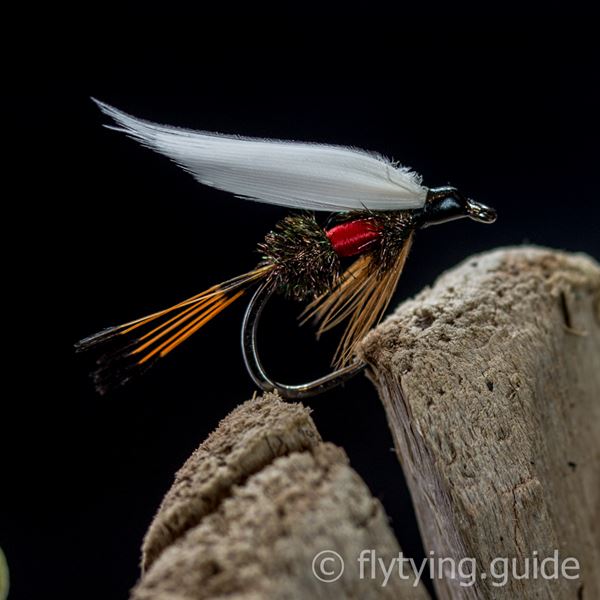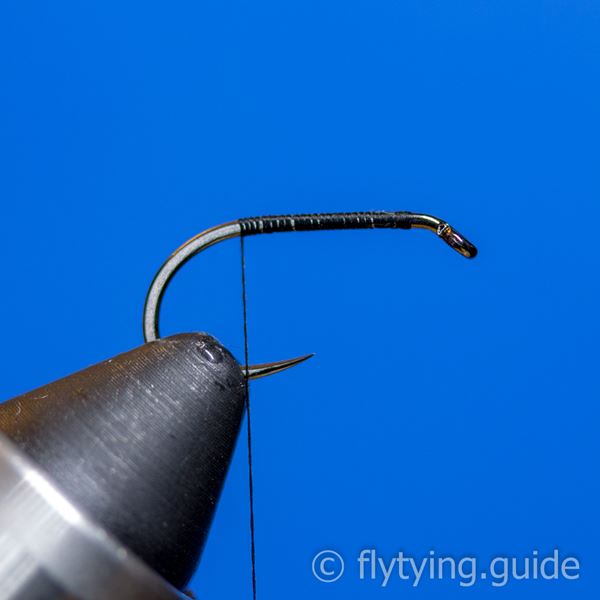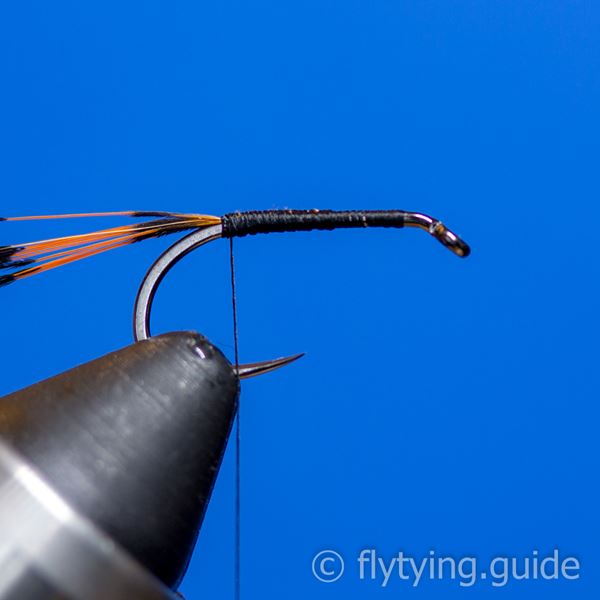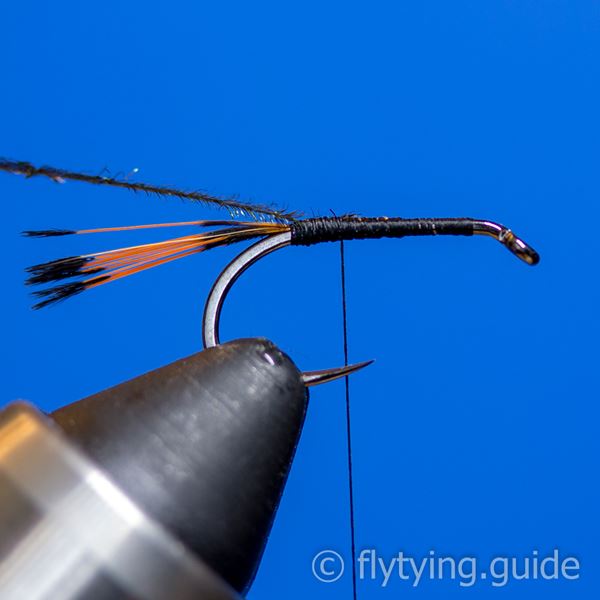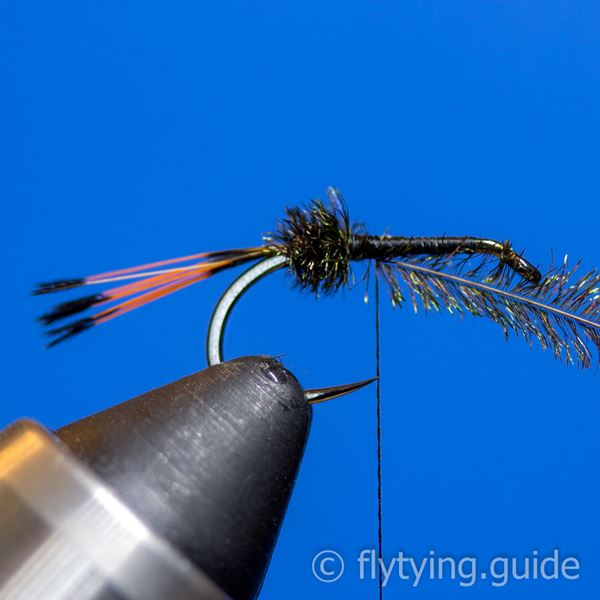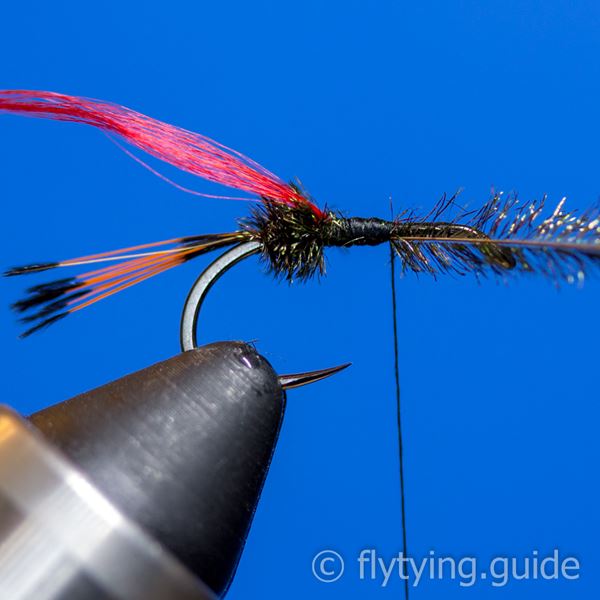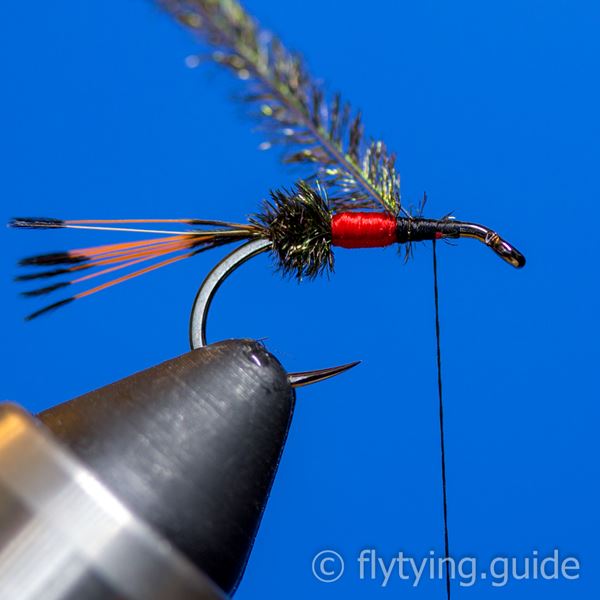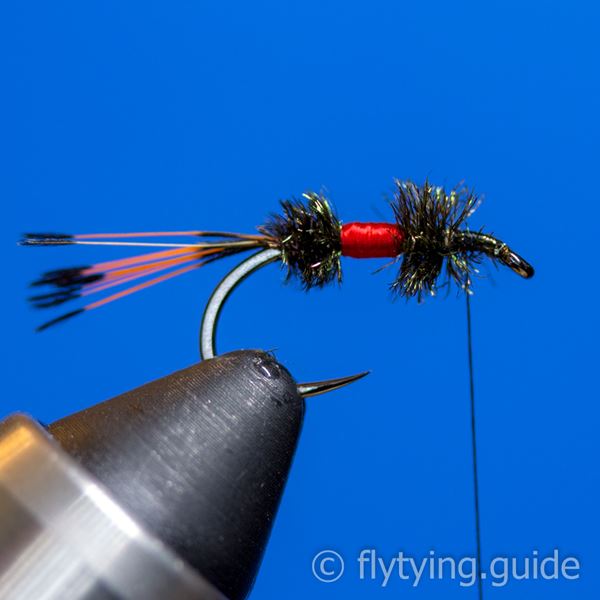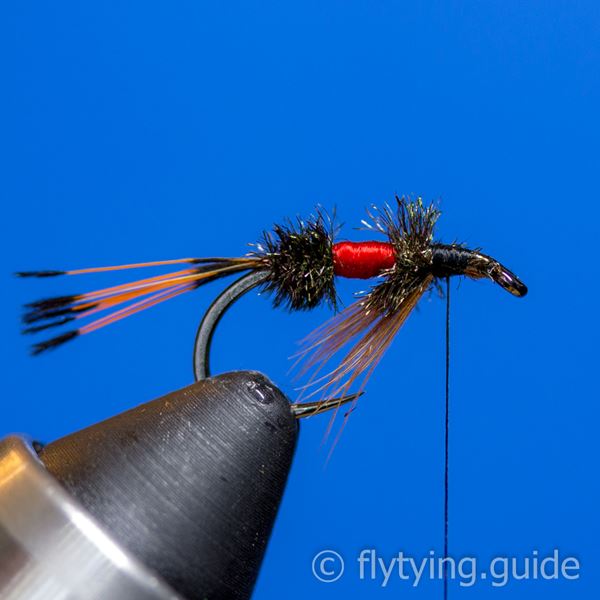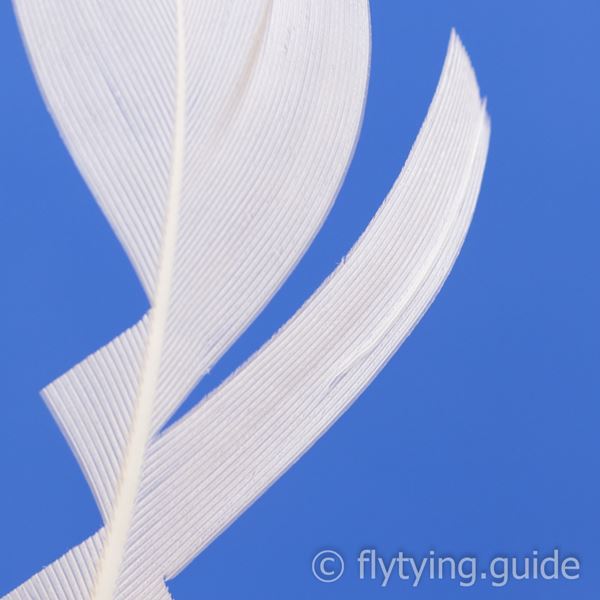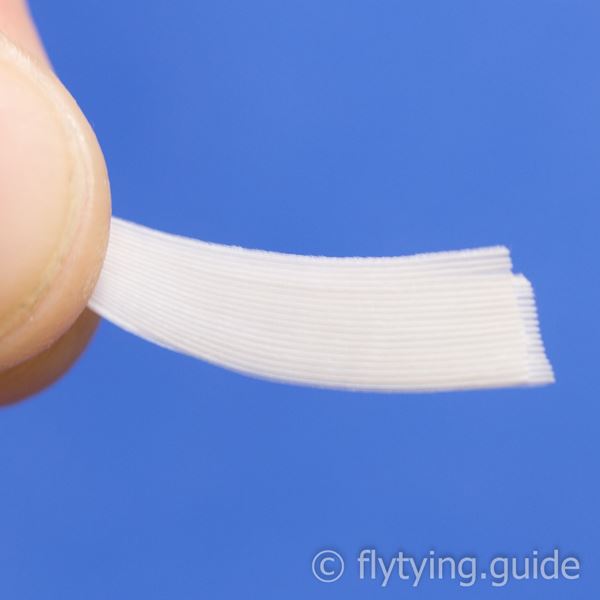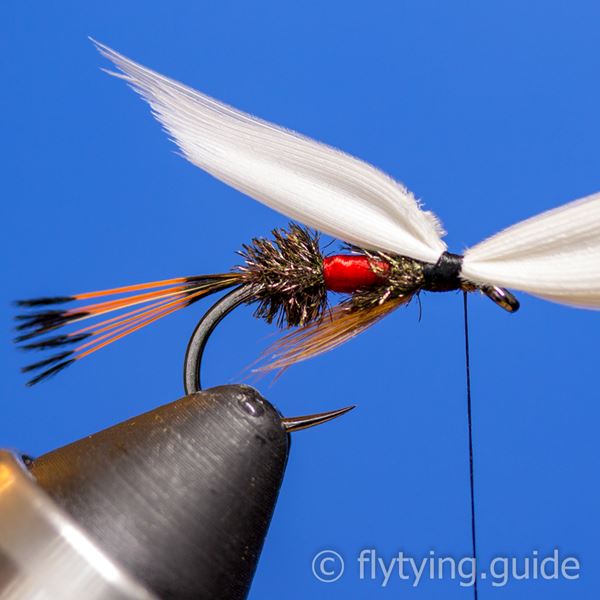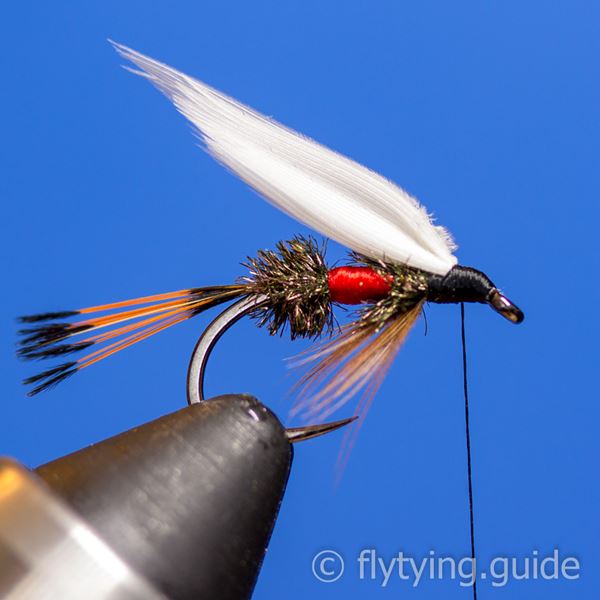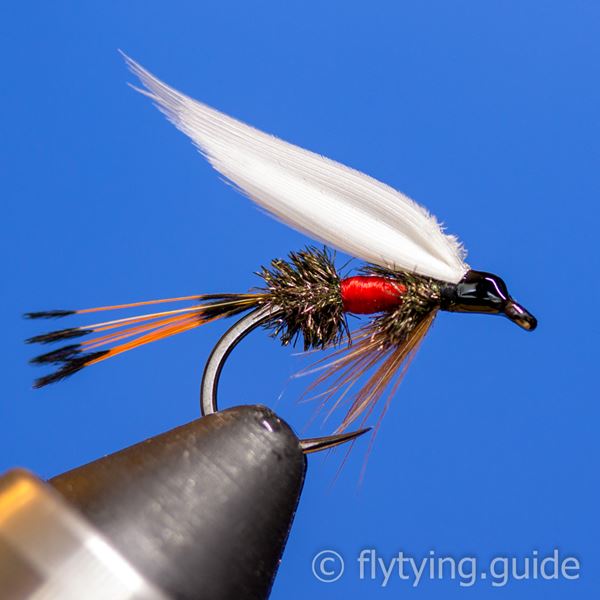Royal Coachman Wet
The royal coachman line of flies are some of the most recognizable flies out there. A tippet tail and red tag in the middle of the peacock herl gives the fly its distinctive look. The wet fly has a down wing made from a matched set of white quills. This version of the fly has been tied based on the Bergman plates.
- Source: Ray Bergman
- Submitted By: Fly Tying Guide
Materials
4
Begin forming the body by taking 4 or 5 wraps with the peacock herl until you reach the thread, secure the peacock herl near the hook point. Advance the thread the desired tag width, covering the peacock herl and forming a smooth under body in preparation for the floss. The tag length is typically a similar size as the body parts or slightly smaller. End with the thread at the tie off point of the completed body section.
9
Prepare the throat hackle legs by removing a small clump of brown hackle fibers keeping their tips aligned. Measure the fibers so they are about to the hook point and secure using a pinch wrap. Alternatively you can apply a soft hackle collar if you have feathers with the appropriate fiber length.
13
Position the wings on top of the hook, pinched tightly in your off hand take one pinch wrap over the fibers but do not release the pinch. Let go of the bobbin and pinch the tag ends of the wing fibers with your primary hand. While pinching both sides of the feather firmly, allow the weight of the bobbin to compress the fibers on top of the hook shank. Do not release pressure on the off hand against the fibers until the wing is secure.
